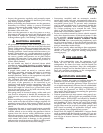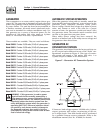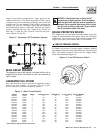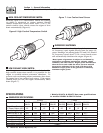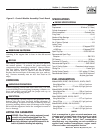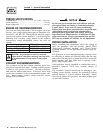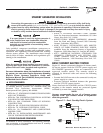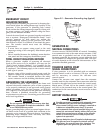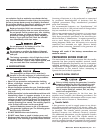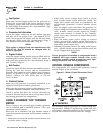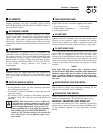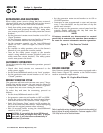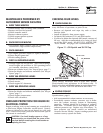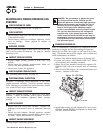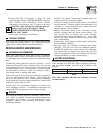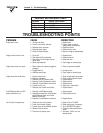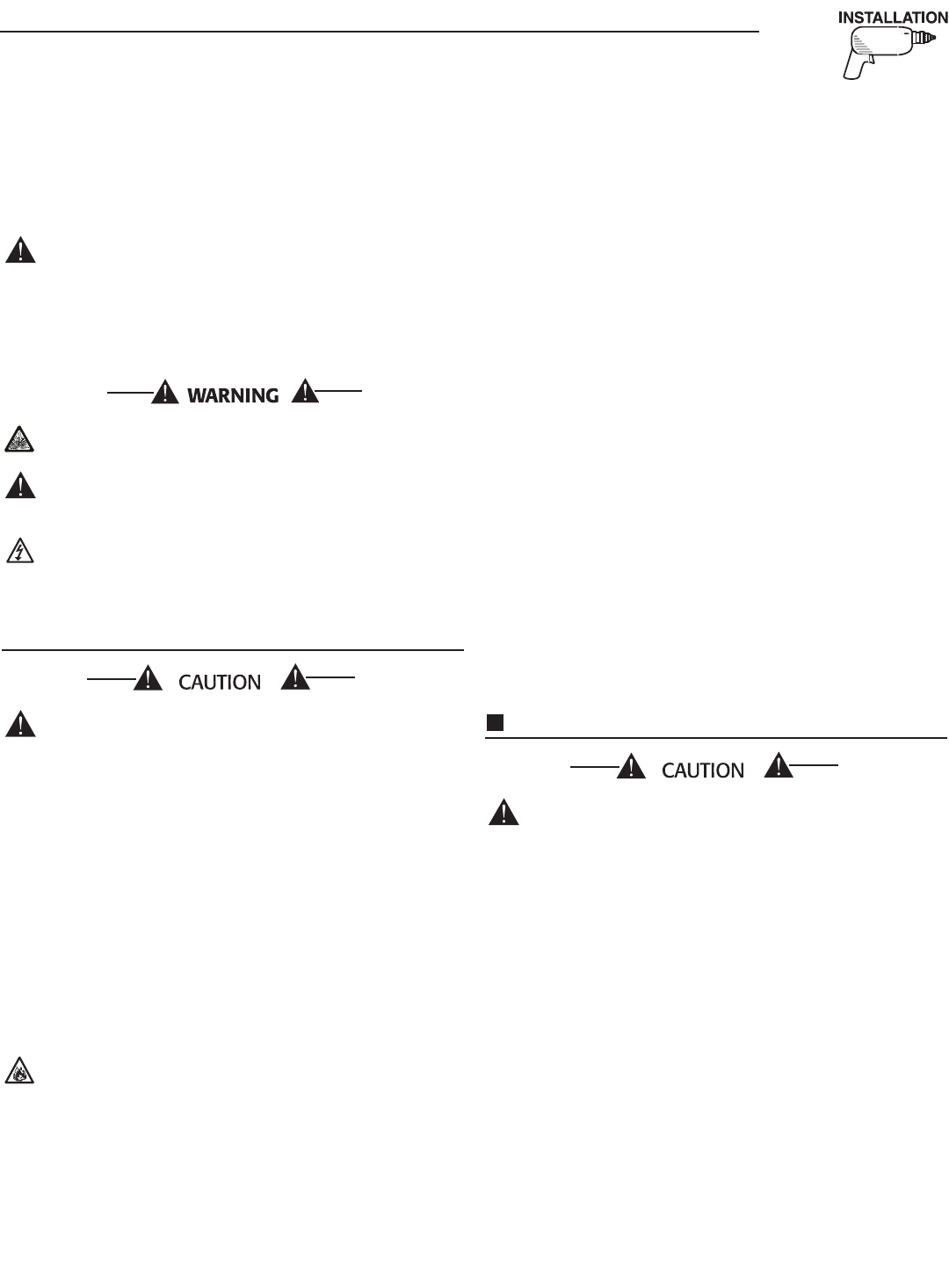
Generac
®
Power Systems, Inc. 11
an explosion. Such an explosion can shatter the bat-
tery and cause blindness or other injury. Any area that
houses a storage battery must be properly ventilated.
Do not allow smoking, open flame, sparks or any spark
producing tools or equipment near the battery.
Battery electrolyte fluid is an extremely caustic
sulfuric acid solution that can cause severe burns.
Do not permit fluid to contact eyes, skin, clothing,
painted surfaces, etc. Wear protective goggles,
protective clothing and gloves when handling a
battery. If you spill the fluid, flush the affected
area immediately with clear water.
Do not dispose of the battery in a fire. The
battery is capable of exploding.
Do not open or mutilate the battery. Released
electrolyte can be toxic and harmful to the skin
and eyes.
The battery represents a risk of high short circuit
current. When working on the battery, always
remove watches, rings or other metal objects, and
only use tools that have insulated handles.
VENTED BATTERIES
The electrolyte is a dilute sulfuric acid that is
harmful to the skin and eyes. It is electrically con-
ductive and corrosive. The following procedures
are to be observed:
• Wear full eye protection and protective clothing,
• Where electrolyte contacts the skin, wash it off
immediately with water,
• Where electrolyte contacts the eyes, flush thoroughly
and immediately with water and seek medical atten-
tion, and
• Spilled electrolyte is to be washed down with an acid-
neutralizing agent. A common practice is to use a
solution of one pound (500 grams) bicarbonate of
soda to one gallon (4 liters) of water. The bicarbonate
of soda solution is to be added until the evidence of
reaction (foaming) has ceased. The resulting liquid is
to be flushed with water and the area dried.
Lead acid batteries present a risk of fire because
they generate hydrogen gas. The following proce-
dure are to be followed:
• DO NOT SMOKE when near batteries,
• DO NOT cause flame or spark in battery area, and
• Discharge static electricity from body before touching
batteries by first touching a grounded metal surface.
Servicing of batteries is to be performed or supervised
by personnel knowledgeable of batteries and the
required precautions. Keep unauthorized personnel
away from batteries.
For recommended batteries, see “Specifications.” All
batteries must be at 100 percent state-of-charge before
they are installed on the generator.
When using maintenance-free batteries, it is not neces-
sary to check the specific gravity or electrolyte level.
Have these procedures performed at the intervals spec-
ified in Section 4, “Maintenance.” A negative ground sys-
tem is used. Battery connections are shown on the
wiring diagrams. Make sure all batteries are correctly
connected and terminals are tight. Observe battery
polarity when connecting batteries to the generator set.
Note:
Damage will result if the battery connections are
made in reverse.
PREPARATION BEFORE START-UP
The instructions in this section assume that the standby
generator has been properly installed, serviced, tested,
adjusted and otherwise prepared for use by a competent,
qualified installation contractor. Be sure to read the
“Safety Rules” on Pages 2 and 3, as well as all other safe-
ty information in this manual, before attempting to
operate this (and related) equipment.
PRIOR TO INITIAL START-UP
Prior to initially starting the generator, it must be
properly prepared for use. Any attempt to crank
or start the engine before it has been properly
serviced with the recommended types and quanti-
ties of engine fluids (oil, coolant, fuel, etc.) may
result in an engine failure.
Before starting the generator for the first time, the
installer must complete the following procedures. For
follow-up maintenance information and/or service inter-
vals, please refer to Section 4, “Maintenance.”
Transfer Switch
If this generator is used to supply power to any electri-
cal system normally powered by an electric utility, the
National Electrical Code requires that a transfer switch
be installed. The transfer switch prevents electrical
backfeed between two different electrical systems.
(For additional information, see the applicable transfer
switch manual for this unit.) The transfer switch, as
well as the generator and other standby components,
must be properly located and mounted in strict compli-
ance with applicable codes, standards and regulations.
▼
◆
Section2—Installation
Guardian Liquid-cooled 10 kW, 15 kW, 20 kW and 25 kW Generators



